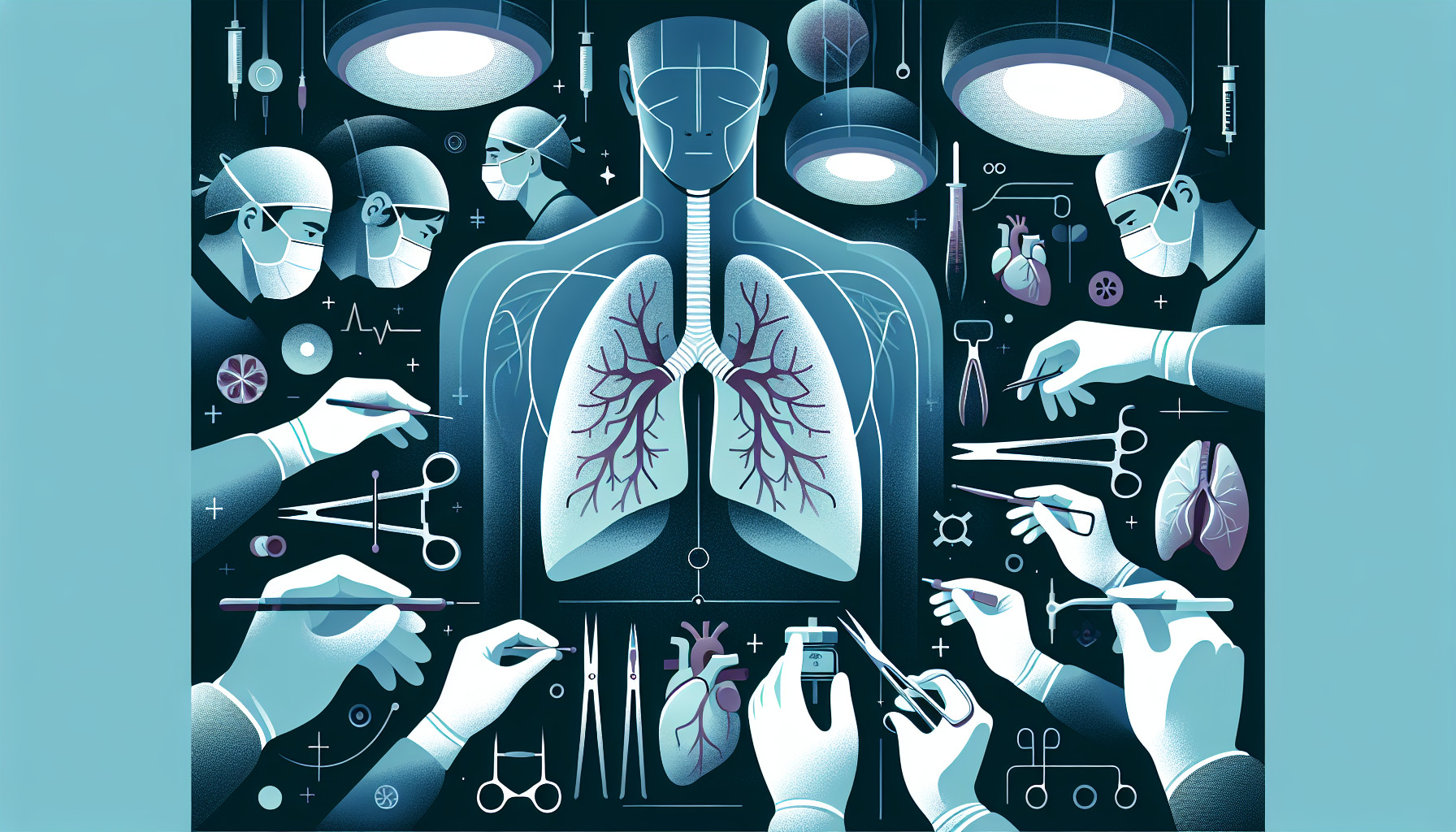Our Summary
This research paper discusses how the lung transplant system in the US is designed to prioritize those who have the highest risk of dying. The paper notes an increase in lung transplants over the past five years, with 2562 transplants performed in 2018, a 31% rise. Despite this increase, 365 adults still died or became too ill for a transplant that year. The paper also discusses lung transplants in children, noting that 24 new children were added to the waiting list in 2018 and 15 transplants were performed on children that same year. Some children were taken off the list because they received a transplant, died, their condition improved, or they became too ill for the procedure.
FAQs
- How does the lung transplant system prioritize who gets a transplant in the US?
- What has been the trend in the number of lung transplants performed over the past five years?
- How many children were added to the lung transplant waiting list and how many transplants were performed on children in 2018?
Doctor’s Tip
One helpful tip a doctor might tell a patient about lung transplant is to follow a healthy lifestyle before and after the procedure. This includes quitting smoking, maintaining a balanced diet, staying physically active, and managing stress. These lifestyle changes can help improve overall health and increase the success of the transplant. Additionally, it is important for patients to closely follow their medication regimen and attend all follow-up appointments to monitor their progress and prevent complications.
Suitable For
Patients who are typically recommended for a lung transplant are those with end-stage lung disease that is not responding to other forms of treatment. This includes conditions such as chronic obstructive pulmonary disease (COPD), idiopathic pulmonary fibrosis, cystic fibrosis, pulmonary hypertension, and bronchiectasis. These patients often have severe symptoms such as shortness of breath, chronic cough, fatigue, and reduced ability to perform daily activities.
In addition, patients who have a poor prognosis and are at high risk of dying without a transplant are prioritized for the procedure. This includes individuals who are on supplemental oxygen, have frequent exacerbations of their lung disease, and have a reduced quality of life due to their condition.
It is important to note that not all patients with end-stage lung disease are eligible for a lung transplant. Patients must undergo a thorough evaluation by a transplant team, which includes a medical assessment, psychological evaluation, and evaluation of their ability to comply with post-transplant care.
Overall, the goal of lung transplantation is to improve the quality of life and increase the survival of patients with end-stage lung disease. By prioritizing those at highest risk of dying, the lung transplant system aims to maximize the benefit of this life-saving procedure for those in need.
Timeline
Before a lung transplant:
Diagnosis of end-stage lung disease: The patient is diagnosed with a severe and irreversible lung disease that has progressed to end-stage, such as chronic obstructive pulmonary disease (COPD), cystic fibrosis, or pulmonary fibrosis.
Evaluation process: The patient undergoes a thorough evaluation process to determine if they are a suitable candidate for a lung transplant. This includes medical tests, psychological evaluation, and discussions with the transplant team.
Waiting on the transplant list: Once approved for a lung transplant, the patient is placed on the national waiting list for donor lungs. The wait time can vary depending on factors such as blood type, size, and severity of illness.
After a lung transplant:
Surgery: The patient undergoes a complex surgical procedure to remove their diseased lungs and replace them with healthy donor lungs. The surgery can take several hours and carries risks of complications.
Recovery: Following the transplant surgery, the patient will spend several weeks in the hospital recovering. They will be closely monitored for signs of rejection, infection, and other complications.
Rehabilitation: After being discharged from the hospital, the patient will undergo a period of rehabilitation to regain strength, improve lung function, and learn how to manage their new lungs.
Follow-up care: The patient will require lifelong follow-up care to monitor their lung function, manage medications, and address any complications that may arise. This includes regular check-ups with the transplant team, pulmonary rehabilitation, and support groups.
Quality of life: Many lung transplant recipients experience improved quality of life following the procedure, with increased ability to breathe, exercise, and engage in daily activities. However, they may also face challenges such as rejection, infection, and side effects of immunosuppressant medications.
What to Ask Your Doctor
- What is the success rate of lung transplants at this hospital?
- How long is the waiting list for a lung transplant?
- What criteria do you use to determine if a patient is a good candidate for a lung transplant?
- What are the potential risks and complications associated with a lung transplant?
- How long is the recovery process after a lung transplant?
- What medications will I need to take after the transplant and what are the potential side effects?
- How often will I need to follow up with my transplant team after the procedure?
- Are there any lifestyle changes I will need to make after a lung transplant?
- What support services are available for lung transplant patients, both during and after the procedure?
- Are there any alternative treatments to consider before undergoing a lung transplant?
Reference
Authors: Valapour M, Lehr CJ, Skeans MA, Smith JM, Uccellini K, Goff R, Foutz J, Israni AK, Snyder JJ, Kasiske BL. Journal: Am J Transplant. 2020 Jan;20 Suppl s1:427-508. doi: 10.1111/ajt.15677. PMID: 31898416
